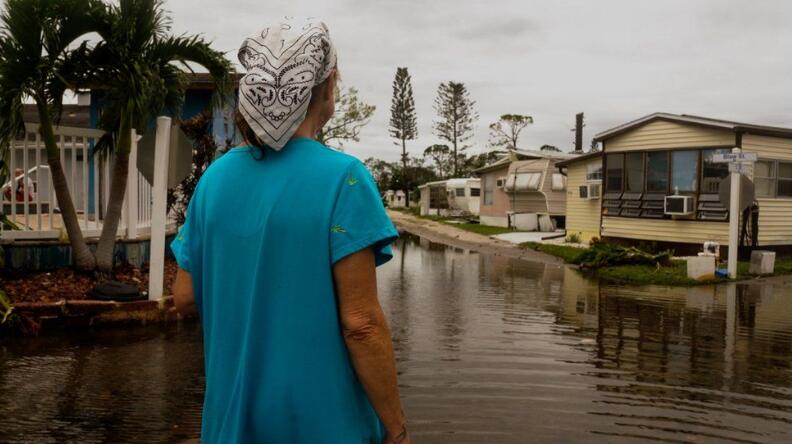Hurricane Ian: They stayed for the storm – what happens now?
“It would have taken an ambulance, a stretcher, and three grown men to move him,” she said of Christopher, who became paralysed just days before the hurricane as a result of prostate cancer spreading to his spine. “I had no control and it was terrifying.”
Without any other choices, Mrs Smith resorted to desperate measures to protect her husband. She used cable ties and gaffer tape to attach a tarpaulin to his hospital bed in a bid to keep him dry and used his wheelchair to barricade the front door from the 150mph (241km/h) winds.
Even that, she feared, may have not been enough.
“I’m his caretaker, so I stayed,” she told the BBC from her home in Punta Gorda – one of the Gulf Coast communities hardest hit by the category four storm. “I put a life preserver around his neck, kissed him and told him I loved him.”
In Mrs Smith’s case, the danger primarily came from the hurricane’s ferocious winds. Many others were hit by a powerful storm surge.
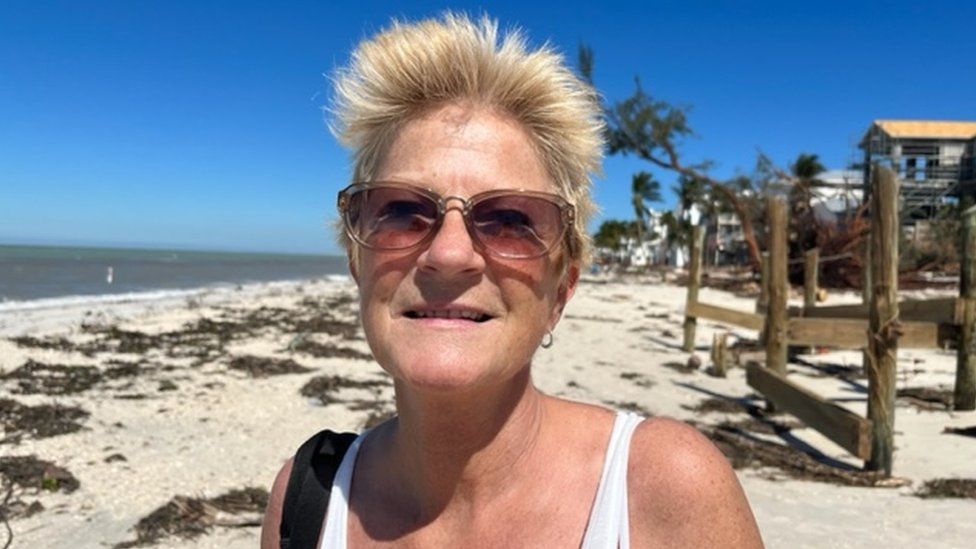
Suzie Mack, a Fort Myers resident, told the BBC that her brother’s mobile home park saw water as high as 8ft during the storm.
“They got on their air mattresses inside their house, because it was too late to leave, and by the time the surge got to its peak, they had about a foot of air left in their homes,” she said. “Nobody died there, but it was a horrific story to hear.”
Not everyone was so lucky. So far, 35 deaths have been confirmed in Florida’s Lee county – a grim toll that is still expected to rise.
In Ian’s wake, some Florida residents have come under criticism for failing to heed repeated warnings and calls to evacuate. But for families like the Smiths and hundreds of thousands of others, logistical and financial hurdles to evacuation meant that staying was the only option.
Others were simply trapped by bad luck.
A woman who identified herself as Melodye, for example, fled from her home in the Tampa Bay area to Fort Myers. By the time it was clear that Ian’s track had shifted south, it was too late for her to leave.
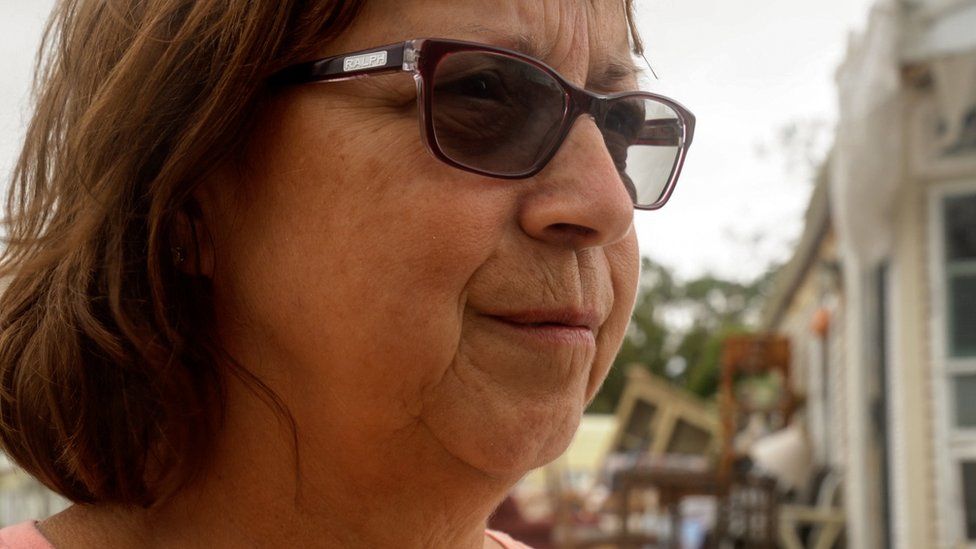
“My area turned out to be safe, never got hit,” she told the BBC at a mobile home park near Fort Myers. “I came down here and experienced the worst thing I’ve ever experienced in my whole life.”
“If there is another, I’m going to Chicago,” she added.
Tough decisions to make
While for the moment the scale of Ian’s destruction remains unclear, independent experts have warned that the economic impact is likely to be well into the tens of billions of dollars.
Consultancy firm Milliman estimated that only 18% of people in areas under evacuation order had flood insurance, putting many residents in difficult or impossible financial situations as they seek to rebuild their homes or recover their losses.
Governor Ron DeSantis – who called Ian a “500-year flood event” – said that the storm may well have “changed the character of our state”.
In these conditions, many Florida residents have been left wondering what their future looks like – and whether to stay in the state or to leave.
Tom, a 48-year-old resident of the town of Port Charlotte, 38 miles (61km) from Fort Myers, told the BBC that he decided to leave the morning after the storm along with his 66-year-old mother, Kathy.
While the pair had already planned a move to Colorado, the hurricane prompted them to pack up and leave the morning after Ian passed.
“The town is destroyed,” Kathy said. So was her home for the last six years.
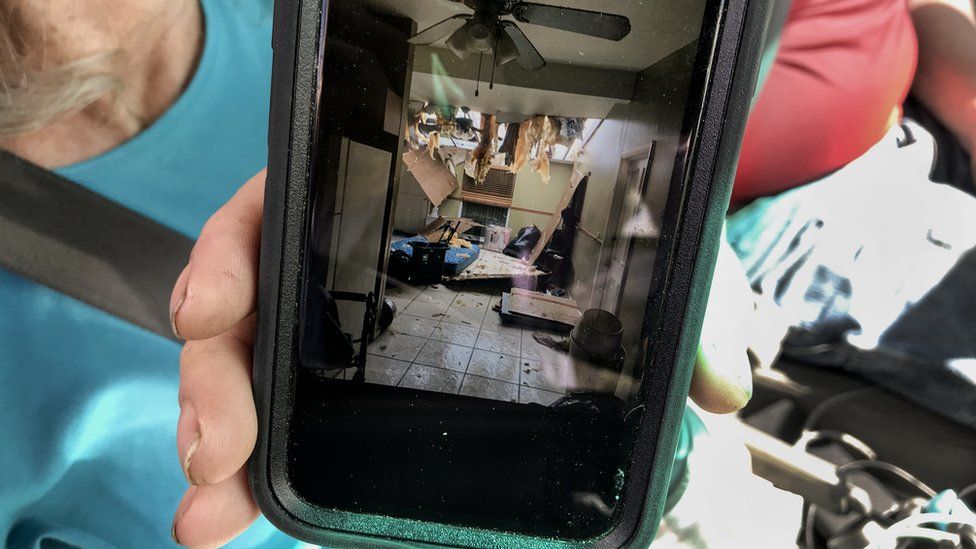
For residents of the Sun Seekers mobile home park in North Fort Myers – many of them transplants from other parts of the US – the government may make the decision to relocate for them by declaring the property “uninhabitable”.
Cindy Brackett, a resident of the mobile home park, said that the prospect of being forced from her home was an additional and unwelcome trauma, just days after the violent hurricane.
“With my arthritis, I can’t do anything. I can’t even walk out of my home. I feel so useless,” Ms Brackett said. She doesn’t want to leave and isn’t sure where she would go if she had to.
Federal officials and the American Red Cross say that about 10,000 displaced people are currently in shelters – not including people who may have taken shelter with friends, family or left the area entirely.
State and federal officials have promised millions of dollars in relief funds, but many people on the ground remain sceptical of how – and whether – it will reach them.
Rebuilding begins
For those able – and willing – to stay, the effort to rebuild has already begun.
Across damaged parts of western Florida, the BBC saw people beginning to clear debris from their homes and businesses, sweeping away palm fronds and parts of shattered houses.
In some places, people were working to clear cars that had been overturned or crushed by felled trees, or boats that had been left sitting useless and far from the water.
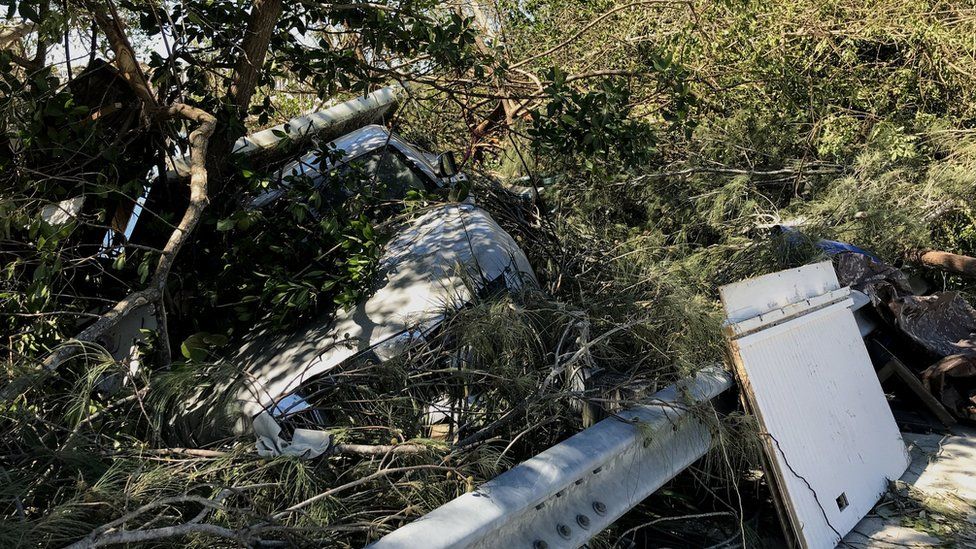
“People around here are devastated,” said Cal Bruno, the owner of a Fort Myers restaurant that gave away thousands of pasta meals to residents for free after the storm. “But we’ll come together.”
Among those vowing to stay to help with the effort is construction worker Alejandro Carrera, an Argentine immigrant and 14-year resident of Fort Myers.
“We will rebuild,” he told the BBC, standing just feet from a shattered local marina. “I work in construction. I’m going to have a ton of work.”
Not everyone is as optimistic
Phoebe Gavin, a Washington-DC based native of Sanibel Island – whose aging parents fled across a causeway to nearby Fort Myer just ahead of the storm – said that she’s “pessimistic” about the island’s immediate reconstruction.
Sanibel – which is located just off the coast and has a population of about 6,000 – was among the hardest-hit communities during the hurricane.
Parts of the causeway connecting the barrier island to Florida were destroyed during the storm, severing access from the rest of the state.
“I can’t see it as a top priority as far as rebuilding,” she said. “It would be shocking to me if we saw previous levels of road traffic within the next year.”
A lack of connectivity to the mainland, she said, would be devastating to a community which survives largely on tourism. The alternative to a working causeway – a ferry – could potentially drive tourists away.
“A lot of people would choose a much easier option,” she said.
Just across the shattered causeway in Fort Myers, pensioner Lucia Kim said that while she is confident that local communities will get back to normal sooner than later, she fears that some of the “spirit” of the area might be lost.
“There is an atmosphere here,” said Ms Kim, who moved from New York a decade ago attracted by the freedom and sense of community.
“Just look at the 1960s architecture as well,” she added, gesturing at art deco buildings in the distance. “Who knows what comes next?”
‘It could have been a lot worse’
After Hurricane Ian passed, Renee Smith cautiously emerged from her home to survey the damage.
What she found wasn’t encouraging.
Her driveway remains covered in debris and detritus from nearby buildings, including some items she immediately recognised as having been ripped from a four-storey hotel blocks away.
To make matters worse, Mrs Smith’s front door won’t shut, her chimney has collapsed and parts of her roof were blown away, leaving her and her bedridden husband partially exposed to the elements.
Mrs Smith, however, sees things that may suggest that the damage in her devastated community could ultimately lead to a stronger and more resilient neighbourhood. Many of the buildings rebuilt after previous hurricanes – such as 2004’s Hurricane Charley – managed to weather the storm better than the rest of the town.
In any case, her husband’s condition means that rain or shine, she’ll be staying put. She has no choice.
For the moment, however, she is simply happy that mother nature has given her a reprieve. Since Hurricane Ian passed, the sun is back out while Florida’s often oppressive heat has been replaced by more comfortable temperatures.
“We’re very fortunate,” she said of the conditions after the storm. “It could have been a lot worse.”
